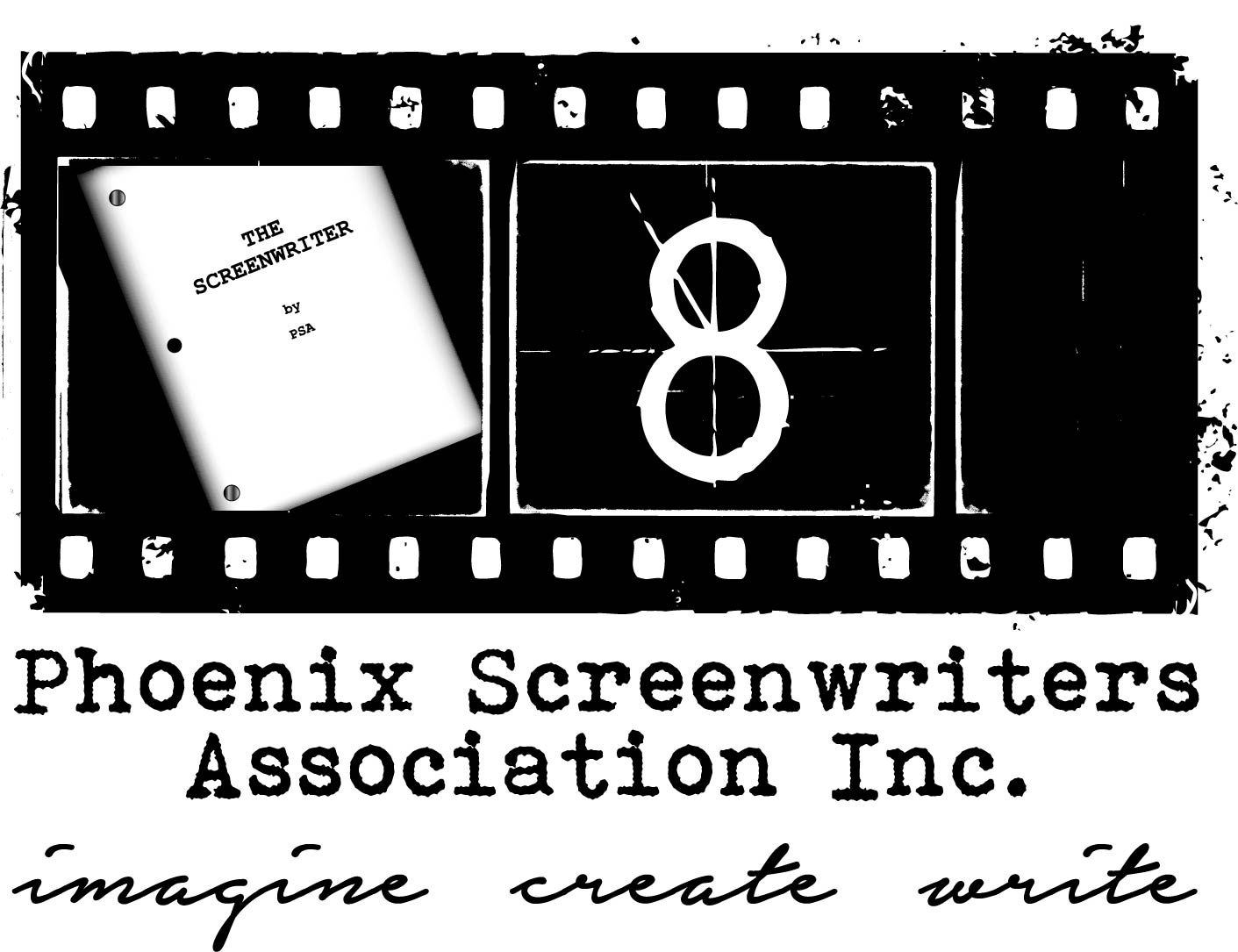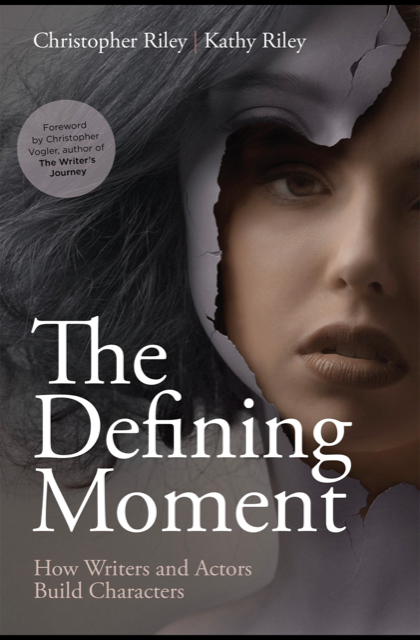The Defining Moment
by Jessica Brown, Screenwriter and Board Member of Phoenix Screenwriters Association
“The Creature crawls across the floor. He is in a dingy garret. He hauls himself shakily to his feet. He struggles to keep his balance and take a few steps.
He falls. He lies still. Then he tries again.
He pads back and forth uncertainly, taking harsh little breaths. He is made in the image of a man, as if by an amateur god.
All the parts are there, but the neurological pathways are unorthodox, the muscular movements odd, the body and the brain uncoordinated.
He licks at the blood on his skin.” *
Do your characters act like Frankenstein’s creation when they first appear on the page? Do they stumble around or act like a cardboard figure? Are they passive, letting events happen to them? Do they mumble their dialogue, rambling and repeating themselves?
Welcome to the world of creating characters.
As writers, we have to pay attention to so many things when crafting a story:
* We have to ensure our plots points align with our story structure.
* We have to get our descriptions crisp, clear and concise.
* Do we have our theme stated at the beginning and have we set up and paid off all the critical pieces of our story?
* Are we a closer?
* Does our ending tie up all the loose ends we let unravel at the beginning? Whew! I am exhausted!
That is just the writing of our story. Wait until you get to the rewrite. It gets even more complicated when you tear your story apart and figure out what it’s really all about.
And then there are the characters. At first they seemed so interesting. But then you weave them into the plot and suddenly they all freeze up or become stiff and dull.
Fear not! I have some wonderful tools to share with you that will help you to create the perfect character for your story and not a creature that scares everyone off from your story.
The Tools
The Defining Moment by Christopher Riley and Kathy Riley
This wonderful book is a guide on how writers and actors build characters. If the authors sound familiar to you, it could be because Christopher wrote the screenwriters’ favorite
formatting reference “The Hollywood Standard”. The Rileys understand storytelling and formatting and character building as they are both screenwriters.
The foreword shares with us “this book is about how to identify the key, defining moments in the lives of the characters we create for our stories, and how awareness of those critical events can help us write more compelling and realistic characters and more thrilling and emotionally charged scenes and situations.”
What a deeply rich experience as a writer when you figure out your characters’ defining moments and bring those moments to life on the page through your characters’ decisions, actions and reactions. Bonus: You will attract actors that are begging to play their roles on the screen and stage.
Character by Robert McKee
Mr. McKee should also be a familiar name. He is the author of Dialogue: The Art of Verbal Action for Page, Stage, and Screen and Storynomics which is a bestseller in the business world. His book “Story: Substance, Structure, Style, and the Principles of Screenwriting” is often a film school-required reading.
Character is another deep dive read but this time into the world of Characters. You learn the difference between people and characters in Chapter One. Chapter Six talks about the difference between roles and characters. There are chapters on the Dimensional Character and the Complex Character not to be confused with the Completed Character. And if you want to dive even deeper Part Three goes into the Character Universe where we learn about character in Genre, in Action, and in Performance.
But wait, there is more. Mr. McKee takes every as he shares his expertise on Cast Design in Chapter Seventeen. His Case Studies with Cast Maps are amazing and will have you thinking differently about who you create for your stories and how they interact with each other.
The Hero Succeeds by Kam Miller
This book is “The Character-Driven Guide to Writing Your TV Pilot”. It says so on the cover of the book.
Inside you get the expertise of a writer-producer and creator who has written TV shows and features. Mr. Miller wrote for the long-running series Law & Order: SVU. He has developed pilots with FOX, 20th Century Fox, CBS, CBS Television Studios, and Universal Cable Productions, among others. He is a graduate of the outstanding WGA Showrunners Training Program.
Reading this book about how to create characters for your TV Pilot, you know you are in good hands with an expert who knows characters and TV inside and out. I love his book for teaching me the sound writing methods which help me to write smarter and faster which is critical in television writing. His method of asking critical questions about your story world and your characters feed directly into your story engine, the world of your show and the characters inhabiting that world.
This is a must read if you are going to write for television. Promise me you will read it.
Creating Unforgettable Characters by Linda Seger
Another familiar name. I HIGHLY recommend you read all of her books as they are each brilliant. Her book “Making a Good Script Great” is another film school must read. And Creating Unforgettable Characters is a must read for anyone that is struggling with creating characters for their stories.
Her book is logically laid out so whether you are writing your first draft or rewriting you can look at the Table of Contents and quickly find a solution to your character woes.
If you are starting from scratch, I recommend that you go through the book from start to finish. Section 1 has you researching your character first. Section 2 has you building on this research by defining your character through Consistencies and Paradoxes.
You then move on in Section 3 to creating a backstory, Section 4 to understanding your characters psychology and then moving on to Section 5, creating the ever complicated character relationships. It is all logically laid out.
You need no worry about your supporting and minor characters as Ms. Seger has them covered in Section 6. One of my favorite sections that I refer to when rewriting is Section 10 on Solving Characters Problems. I finally realized that some of my rewriting wasn’t just solving story problems but solving character problems by reading this section.
And finally, a new favorite is: Writing Diverse Characters For Fiction TV Or Film by Lucy V Hay.
In entertainment today we encounter all types of characters and their stories. As Ms. Hay states in her beautiful book “Most of the world is not white; plus females make up 51% of the population. Depending on which reports you read, between 1.5% and 10% of people count themselves as part of the LGBT community in the UK, with a whopping 19% of the British population having a disability – that’s nearly one in five people. Studies report similar numbers for these last two demographics in the United States and other countries.”
When we understand these dynamics, the world of storytelling opens up countless opportunities to craft even more interesting stories that will appeal to a wider audience that can relate or who want to understand people with such a diverse background and lifestyle.
Ms. Hay shares compelling reasons to understand diversity and why it is so important to include diverse characters in your stories. I love her section on What is ‘bad’ characterization? Her definition is spot on and includes a great checklist to use when you are in the middle of your rewriting.
From my own personal experience, I consider myself fortunate to be counted a friend of John McCarney, a fellow writer and member of PSA. I am sharing this with you because I have witnessed the success that John has experienced through his diverse characters.
John is currently in the WGA Veterans Fellowship Program. What got the program’s attention? His unique writing voice and stories with diverse characters from all walks of life. And while there were other requirements for the program, that John easily met, it was his diverse characters that made him stand out and it’s those characters that are winning multiple competitions and gaining the attention of producers and agents.
I know from watching John’s success that he and Ms Hay understand how valuable diverse characters are to storytelling.
This book is a keeper and sure to become a film school must-read.
And there you have my favorites. There are many more wonderful books on characters and storytelling and how to successfully craft both at the same time. If you have a favorite that I did not mention, feel free to reach out to me and share at jessbrown44@gmail.com.
* A sincere thank you to Waltonhigh.typepad.com and Nick Dear’s version of Frankenstein which is based on the novel by Mary Shelley. Mr. Dear’s version is a fun and fast read of Ms. Shelley’s masterpiece. The above quote is from his Scene Two.
Happy Writing!
Jess

